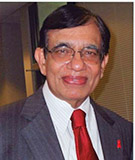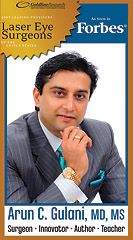
SITTING DISEASE …. A stealth invader! Part I

A new disease is making its way around these days. The name is ‘Sitting Disease’ and it is detrimental to your health. You may not realize it at first but this one is a stealth invader. Well, the simple act of sitting in a chair or sofa for long periods of time at a stretch is beginning to look like a threat to your well-being – yet another risk factor for heart disease and strokes. Very settling, right?
Wellness gurus have always told us that sedentary life style does not foster good health. Till now, that meant getting up and doing some exercises on a regular basis and that’s the reason we see more walking clubs, increase in gym memberships and other exercise programs these days. But for good health, we need to cut down our sitting time as well.
Come to think about it, we do spend a lot of time sitting – in front of the TV, while reading newspapers or books, doing conferences and more; so we earned the nickname couch potatoes. Now with the advent of computers, our sitting time has escalated to no limits. Reading the e-mails, watching you tube videos, looking at our accounts, doing the banking, ordering stuff from amazon.com …. well, we need the computers for everything these days. The net result: we wind up spending an enormous amount of time sitting at the detriment of our own health. And for those computer specialists, it’s even worse.
Let us look at the evidence linking excessive sitting to ill health. In 2012, two studies by researchers from Loughborough University, London, and the University of Leicester assessed nearly 800,000 people from a range of countries. They found incredibly strong correlation between excessive sitting and poor health. And their findings: “Compared to people who sit the least, those who spend most time in a chair have a 112 per cent higher risk of developing diabetes, a 147 per cent higher risk of suffering ‘cardiovascular events’ such as strokes and a 49 per cent increased risk of death from any cause.” They are even at high risk for cancer, especially colon cancer!
“That’s pretty profound, right?” you would say. Well, there is more. High cholesterol, chronic lower back pain (a major cause for addiction to opioid drugs these days), obesity and poor peripheral circulation are a few of the other problems caused by too much sitting. Who would have thought the humble chair on which you sit everyday can actually be contributing to your ill health?
More alarming is the recent research from the Medical College of Wisconsin that assessed the activity levels of more than 2,000 middle aged adults. “They were found to spend, on an average, just over five hours a day in a chair, and for each hour that they weren’t standing, the levels of atherosclerotic deposits in their blood vessels increased by 14 per cent. Interestingly, any improvement in fitness from spending time at the gym doing all those workouts was almost completely negated by staying still for a few hours.” Can you believe that?
Desk jobs have always been in existence before but have increased exponentially in recent times. “Active couch potato” is a newly coined term to describe so many with sitting office jobs or those in other sedentary occupations where they still spend a lot of time glued to the chair. And they get sick in a slow and steady fashion, developing diseases like high blood pressure, diabetes, heart disease, etc. They are not ill enough to be absent from the job but come to work with chronic illnesses that sap their energy and decrease productivity. This is a major challenge to the companies who employ them these days.
“Sedentary jobs have increased by 83 per cent since 1950, and the government’s Foresight program estimates that “presenteeism”, defined as “the loss of productivity that occurs when people come to work ill”, costs the United Kingdom economy as much as £15.1 billion every year,” says a recent report from England. So many companies are now looking for ways improve the situation, how to cut down the time spent in the chair and, at least do part of the work standing or in some other ways that the body can be in motion.
Will be concluded in the next issue …
M.P. Ravindra Nathan, M.D., is a cardiologist and Emeritus Editor of AAPI Journal. His book “Stories from My Heart” was recently released. (www.amazon.com or www.bn.com).
EYE CARE
Stuff the Stocking of Sight in time for Christmas

It’s that time of the year.
While you look at the list of gifts that you have to provide for your kids and loved ones, you wish you could read the “fine print”- without glasses!
In many of my columns in the past (KhaasBaat issues) over the years, I have driven home the concept of custom-designed surgery using innovative and ground breaking technology in a unique recipe to help each patient/person achieve their best vision – without glasses
So, look at your individual situation. Are you young and near sighted or farsighted, do you have astigmatism? Are you “maturing” into the age of 40 or above and needing those inevitable reading glasses?
Are you of the cataract age and always dreamt of living your retired life travelling all over the world and seeing all the wonders – without glasses?
Today, with all the recent advances in techniques, technologies and vision goals, we can design your vision accordingly with a long-term outlook in taking you to a life of “vision freedom.”
There’s non-cutting LASIK techniques for near sightedness/farsightedness and astigmatism; Laser Corneoplastique for cases that are told they are “not a candidate;” Presbyopic implants such as Raindrop and Kamra for correcting vision without reading glasses; multifocal, accommodative and Toric lens implants for cataract surgery; and combinations of laser and lens implant techniques; practically every patient/person with a normal eye can aspire for such vision freedom.
We now have lens implants that address various specific functions, including multifocal (progressive) to help you see distance and near, Toric (to correct astigmatism), bifocal. And even more, there are trifocal, photocell and re-chargeable. A thorough exam of your eye, including its optics and health, can help decide which lens implant will most likely result in vision without glasses at distance and near.
Sit down with your eye doctor and ask questions about pros and cons and possible expectations. How the lens implant chosen for you works and how will that translate to vision for your individualized goals. What are the possible side effects and what solutions are available if so?
Do clearly outline your vision goal (distance vision, near vision or both and do you have to have perfect night vision, etc.)
With technology today, practically every refractive error (glasses and contact lens prescription) can be corrected so you can become more independent and enjoy work and personal life.
Additionally, even if you have had previous surgery (such as Radial keratotomy, corneal scars, etc.) or complications of previous Lasik or cataract surgery, you have options to have vision corrected.
Talk to your eye doctor, ask about your ocular status, including vision errors, and then take the time to individualize your request with what kind of vision you would like and Voila! You now have a “wish list.”
Now make that list, explain to your family (or someone who you know will pay for it) and make that pending list in time.
Santa has updated his options for gifts to include all these vision corrective technologies.
Arun C. Gulani, M.D., M.S., is director and chief surgeon of Gulani Vision Institute in Jacksonville. He can be reached at [email protected] or visit www.gulanivision.com